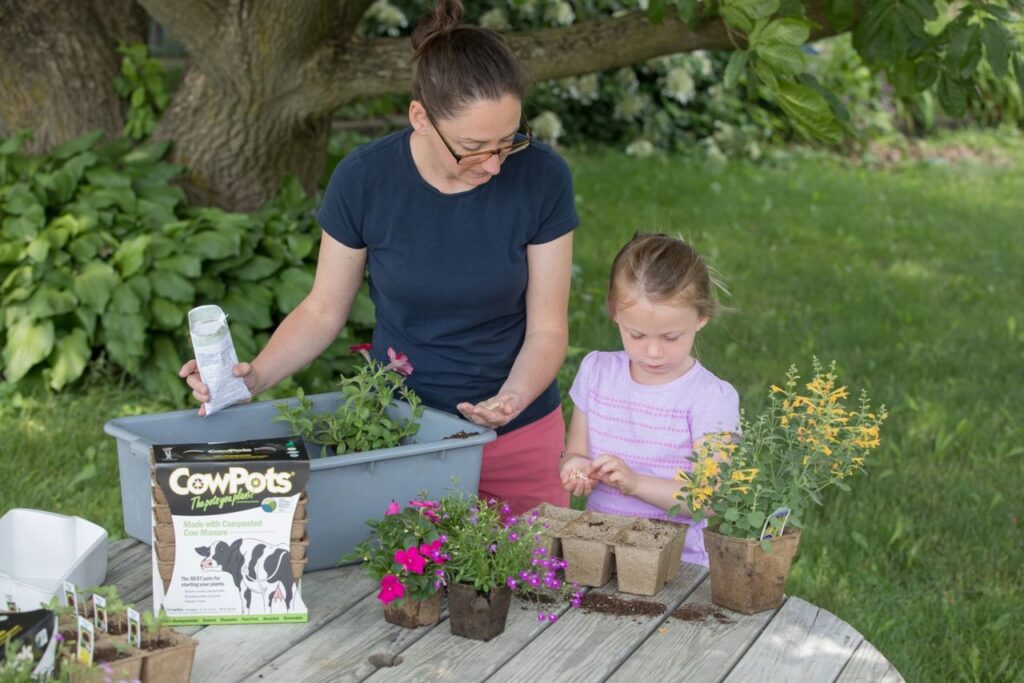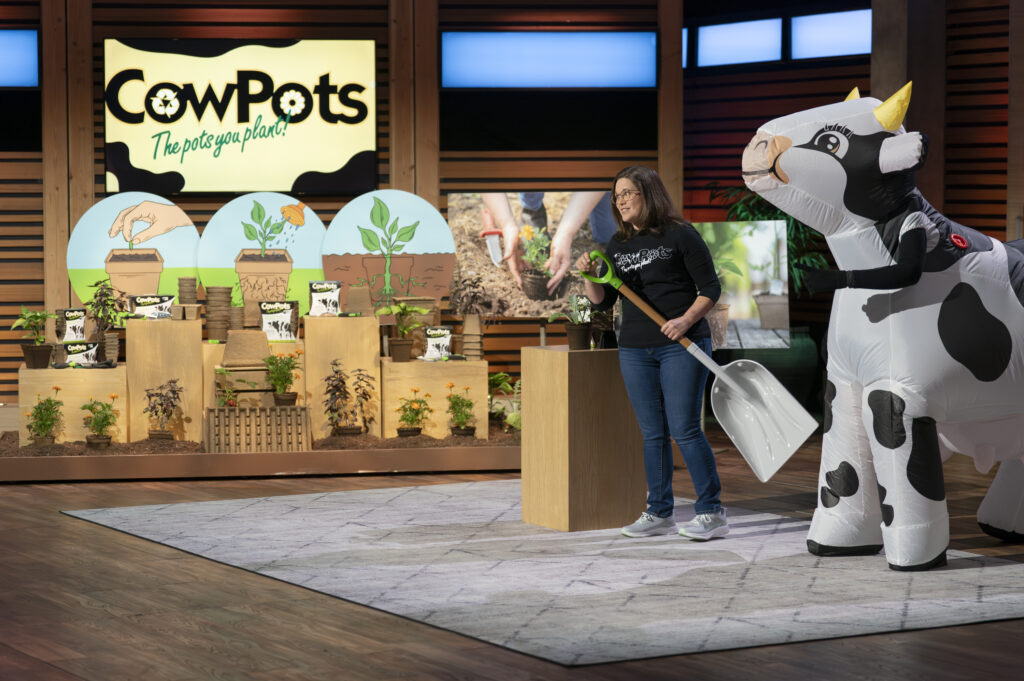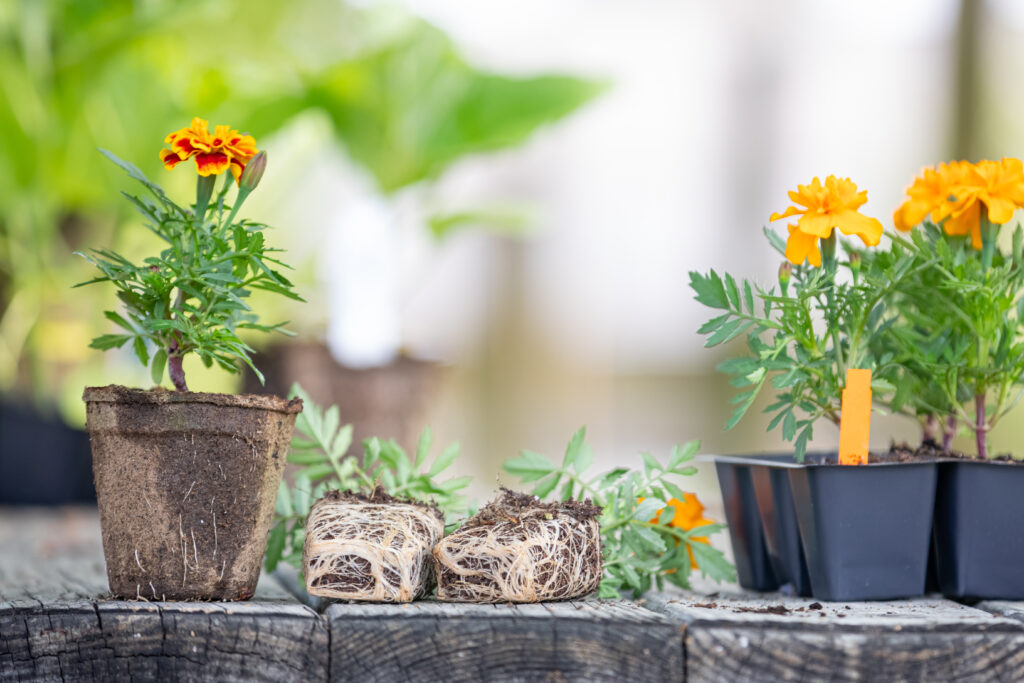
When you are starting seeds and stepping up transplants, you have a lot of options for types, styles and designs of pots. If you have wondered what are the primary differences of compostable vs plastic options, we have reviewed some pros and cons specifically of biodegradable vs plastic pots. A lot of times, growers don’t always choose exclusively one over the other but have a hybrid approach and select the pot style based on plant performance and benefits. So let’s review the reasons for why you might choose CowPots vs plastic pots.
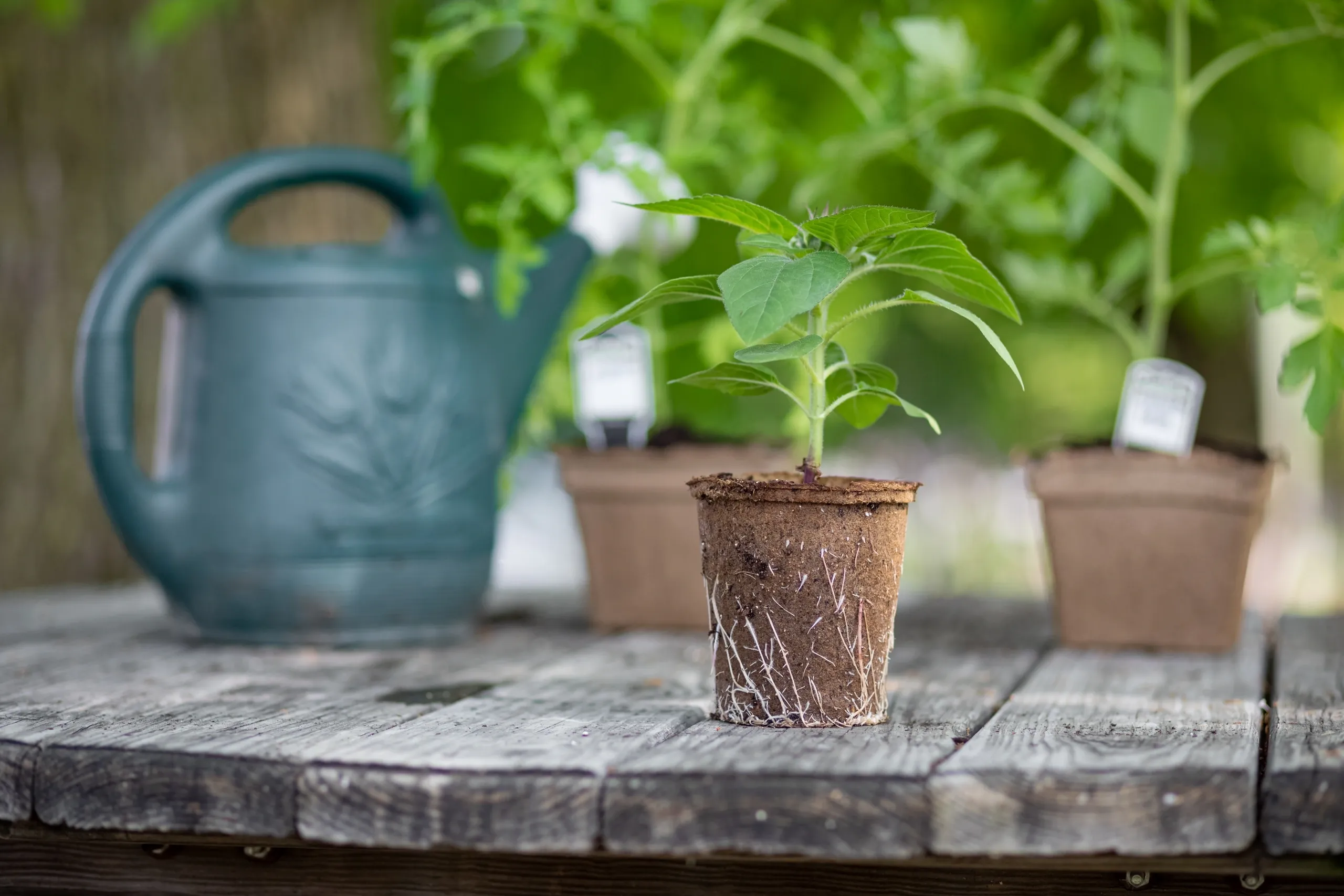
Pros of Growing in CowPots
- Unrestricted root penetration. The porous pot walls of CowPots allow plant roots to grow through every side of the pot. First and foremost, this prevents your plant from becoming root bound which can happen in pots with impermeable surfaces like plastic and terracotta. Once the roots penetrate the pot wall, there is a process called air pruning, where the exposed roots ‘burn off’ and stimulate the plant to produce new branching roots. This natural process stimulates a stronger and healthier root system for your young and growing plant.
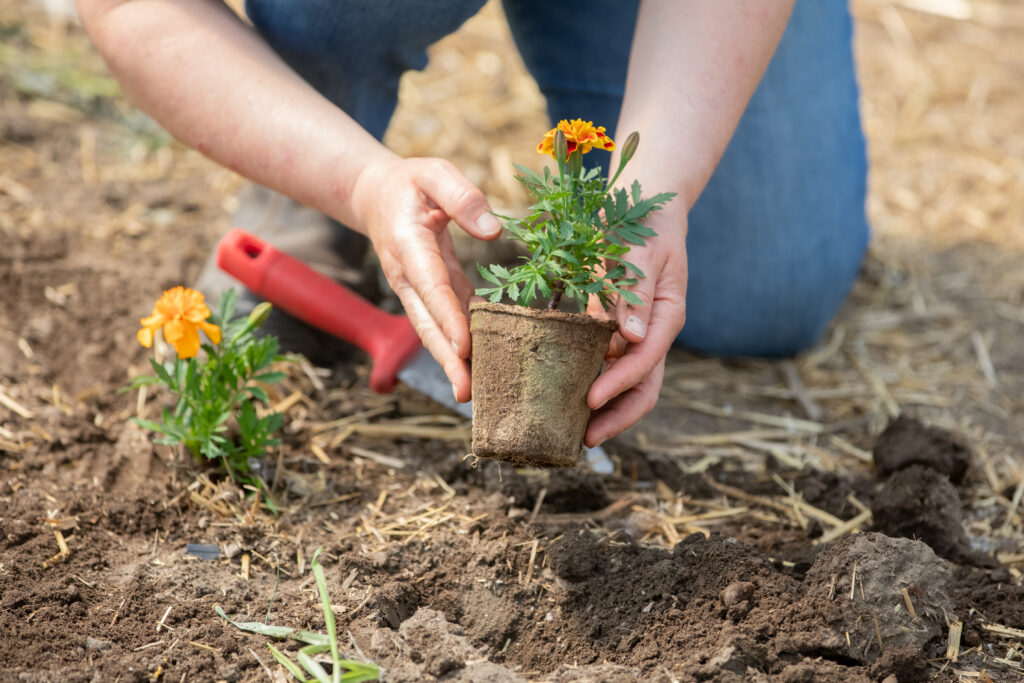
- Eliminate Transplant Shock. CowPots are 100% Biodegradable and are designed to be planted directly into the ground. Other biodegradable planting pots strongly recommend that you tear, crush or score the pot wall before transplanting in the ground. However, we encourage you to put the ENTIRE pot in the ground without disrupting the roots. You will have noticed roots already growing through the pot walls above ground. These roots will continue to grow, unrestricted, through the CowPots wall. CowPots are also designed to break down in a single growing season. Within weeks under ground (or buried in potting soil in your patio container) they will begin the vital process of decomposition with the help of microorganisms and soil bioactivity.

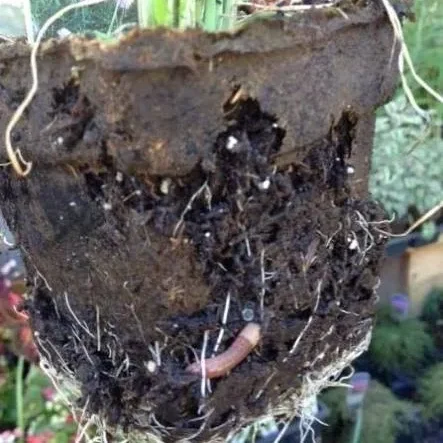
- Nothing to Throw Away. CowPots were invented as a way for a dairy farm to better manage the byproduct (cow manure) on their farm. By adding value to this resource that was plentiful on the farm, they were able to pack it up and ship it all across the country to provide growers and gardeners with a biodegradable container that really does break down in the ground. Because you are encouraged to plant the whole pot, you’re left with nothing to throw away afterwards. As we continue to become more mindful and aware of our individual contributions to waste, this is an important step in reducing the trash associated with our gardening activities.
Cons of growing in CowPots
- A finite shelf life. The smaller style CowPots are designed to accommodate a 12 week shelf life in a greenhouse setting. After that time frame, they become fragile and should be transplanted. They’re not well suited for plants that require months or even over wintering above ground.
- Adjusted watering routine. CowPots behave and perform differently than other pots, especially when it comes to watering. The porous pot walls absorb water. They can stay damp longer when it’s cool and cloudy and can lose moisture more quickly when it’s hot and dry. These are variables that can be managed, but you have to be prepared to treat plants growing in CowPots differently than those growing in plastic pots when it comes to watering regiments.
- Handle with care. Because the pot is designed to break down – eventually, it is more fragile than a pot made from plastic that is designed to NEVER break down. Some of the creative ways that we have found to improve handling of CowPots in a retail setting is to try to handle and move the pots before watering them. They have more strength when they are dry and harden back up. We also fill potting soil flush to the top lip of the pot as this discourages gardeners from trying to pick the pot up just from the lip. Once the plant is established and roots are growing through the side walls, you can grab the base of the stem when picking up and moving the planted CowPots.
Pros of Growing in Plastic
- Inexpensive. The industry standard for plastic pots – the thin walled, black plastic are being produced by the millions and are less expensive than any other style pot for growing in.
- Reusable. If you have the capacity to sterilize your planting containers before using them, plastic pots can be reused over and over and over. They really won’t break down, especially if you store them out of the sun when you’re not growing in them so that they don’t become brittle and break.
- Easy to Find. You can find plastic pots very easily from any garden center, online retailer and nursery. In fact, if I walk out to my garage, I probably have a pile of 12-20 pots sitting there and ready to be filled with soil.

Cons of Growing in Plastic
- Not recyclable. If you are the one reusing your plastic pots, that’s great. But if you are putting them in the recycling bin and expecting them to be recycled for some future use, think again. Most of the black plastics that are used in the green industry are not recyclable. Every year, 500 million TONS of plastic waste generated by the horticultural industry enters the landfill.
- 450 years to break down. Unlike fiber pots, plastic is designed to last, that’s what has made it so convenient and easy to use. But the typical plastic pot will take 450 years to break down. Many of the pots we use for gardening are single serve. Like your zip loc bag and to go cup, this pot or pack was only used for a few weeks to grow and deliver a plant and then is disposed of with a much longer life span sitting in a landfill.
- Root Bound. Roots can’t grow through a plastic pot and so they will grow inward rather than outward. This leads to circling and plants can become root bound if they’re left too long in a plastic pot. If the roots have nowhere to grow, plant development will slow down.

